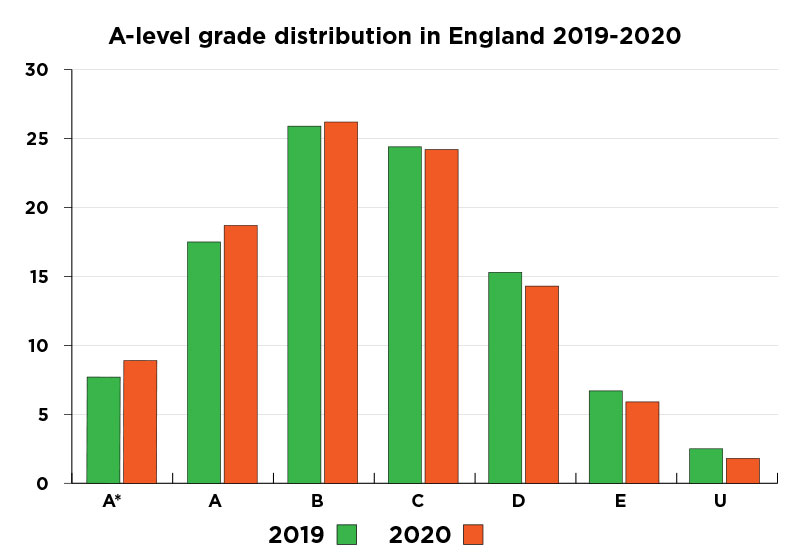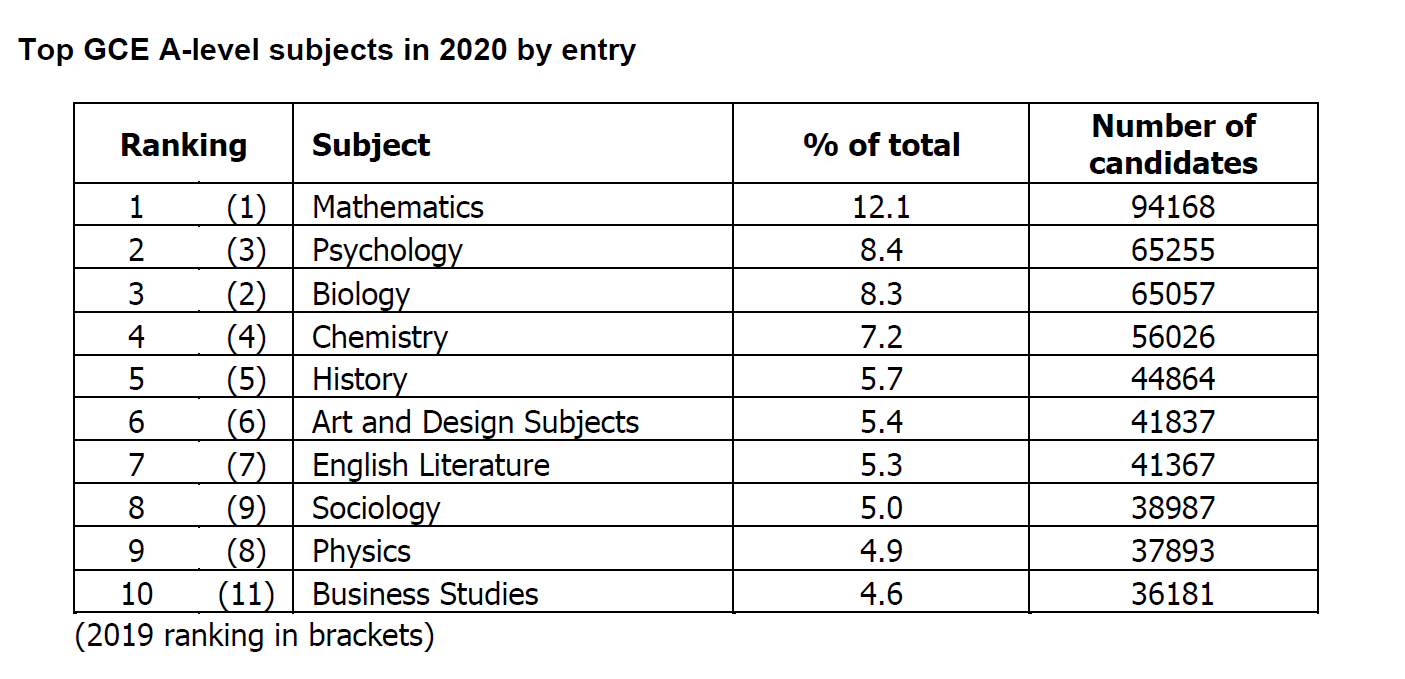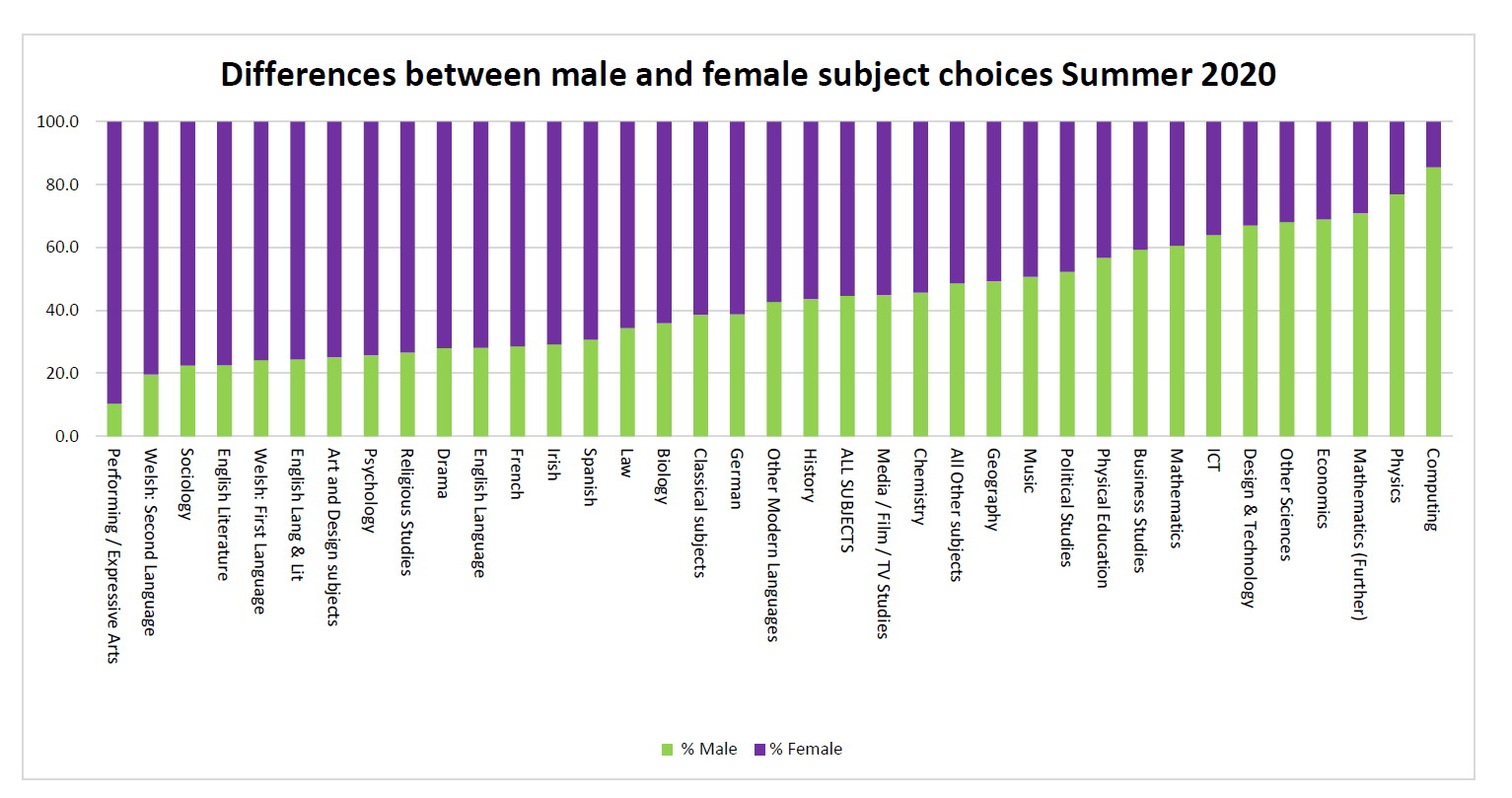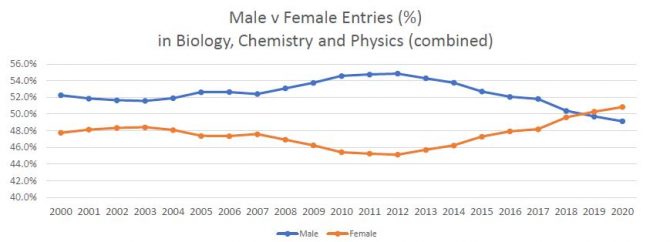A-level results are out! Here’s what we know…
1. Overall performance in England*
The proportion of A* and A grades has risen this year by 2.4 percentage points to 27.6 per cent, the highest level in at least 13 years.
The proportion of A* grades also rose, from 7.7 per cent last year to 8.9 per cent.
Overall, 98.2 per cent of grades were an E or above, up from 97.5 per cent last year.
*Note: these figures are England only. Figures for UK-wide do differ slightly
2. A-level grade distribution in England: 2019 vs 2020
Analysis of grades shows that the proportion of A*, A and B grades issued is up, while the proportion of other grades is down.

3. Almost 2 in 5 grades were lowered
The standardisation process, by which exam boards have moderated centre-assessment grades to produce calculated grades, looks set to be the most controversial aspect of this year’s results.
Ofqual has published data this morning which shows that 35.6 per cent of grades were lowered by one grade, while 3.3 per cent were reduced by two grades, and 0.2 per cent were reduced by three grades.
Some grades were raised through the process too, with 2.2 per cent raised by one grade, 0.05 per cent by two grades and 0.01 per cent by three.
There was no change to 58.7 per cent of grades.
4. Which subjects are gaining/losing popularity?
The top 10 most popular subjects at A-level across the UK have changed for the first time in five years.
Business studies is now in the top 10, having been the 11th most popular last year, while geography, previously number 10, has fallen out of the list.
Although maths remains the most popular subject, there have been some other changes to the order ranking, with two science subjects dropping in popularity.
Psychology, which was third most popular last year, is now second most popular, having swapped places with biology.
And sociology, which was ninth last year, is now eighth, having swapped with physics.
Computing saw the biggest increase in entries this year, up 11.7 per cent, followed by business studies and English language, both up 6.6 per cent.
The biggest decreases were in “other modern languages”, down 40.6 per cent, ICT, down 15.3 per cent and geography, down 13.6 per cent

5. Which subjects have the biggest gender gap in entries?
In England, computing continues to have a big gender gap at A-level, with girls making up just 14.5 per cent of the cohort.
However, this continues a growing trend of increasing participation from girls – up from 13.2 per cent last year and 11.7 per cent in 2018.
However, boys represent the minority in a variety of subjects such as performing and expressive arts, sociology and English literature.

6. Girls overtake boys in England
Last year, we reported how girls had started to outperform boys in terms of achievement of top grades in UK-wide results. However, in England, boys remained slightly ahead.
This year, girls have overtaken boys in England: 28 per cent of girls got an A or A* this year, up from 25.1 per cent last year, compared with 27.1 per cent of boys, up from 25.2 per cent last year.
However, boys still outperform girls in terms of the proportion achieving A*s – at 9.2 per cent compared with 8.7 per cent.
7. Spanish popularity continues to increase as others fall short
Among modern foreign languages, the popularity of Spanish continued to increase across the UK with entries up 0.9 per cent to 8,705.
The fortunes of German and French have continued to fade with entries to each falling.
German was down 6.2 per cent to 2,845, while French entries dropped by 1.1 per cent to 8,260.
Over the three MFL subjects, entries by boys declined by 6.2 per cent, while entries by girls saw a rise of 1.5 per cent.
Although German has the smallest cohort of entrants, it boasts the highest percentage of top grades – with 53.8 per cent of pupils earning an A* or A.

8. Girls’ science entries continue to rise
Having overtaken boys in terms of entries to sciences across the UK last year, girls continued to enter more of the subjects.
This year, 50.9 per cent of science entrants were female, up from 50.3 per cent in 2019.

Schools Week will be analysing the trends throughout the day. Check back for more.








In view of the criticism of the review system, it would be interesting to see the analysis above using the school predicted grades.
It would be interesting to amsee the breakdown of percentage increases for each grade across different types of institution.
GCSEs- keep to teachers’ assessments this year and future because students go on to either ‘A’ level also taught by teachers or into business that is controlled by their employers. Sorted!
In the interests of up-to-date and accurate reporting, can you please now re-generate this table, based on the revised figures now that the higher of teacher predictions vs algorithm corrections are being used instead. The above information should also be marked as out-of-date, as it now becomes somewhat misleading, this is no longer the correct distribution table for 2019 vs 2020
I have no idea where you got this data but it is clearly and obviously wrong. NOBODY did ICT A level in 2020. It stopped existing as a subject in 2018. that is, at the least sloppy reporting.
[…] https://schoolsweek.co.uk/a-level-results-2020-8-key-trends-in-englands-data/ […]